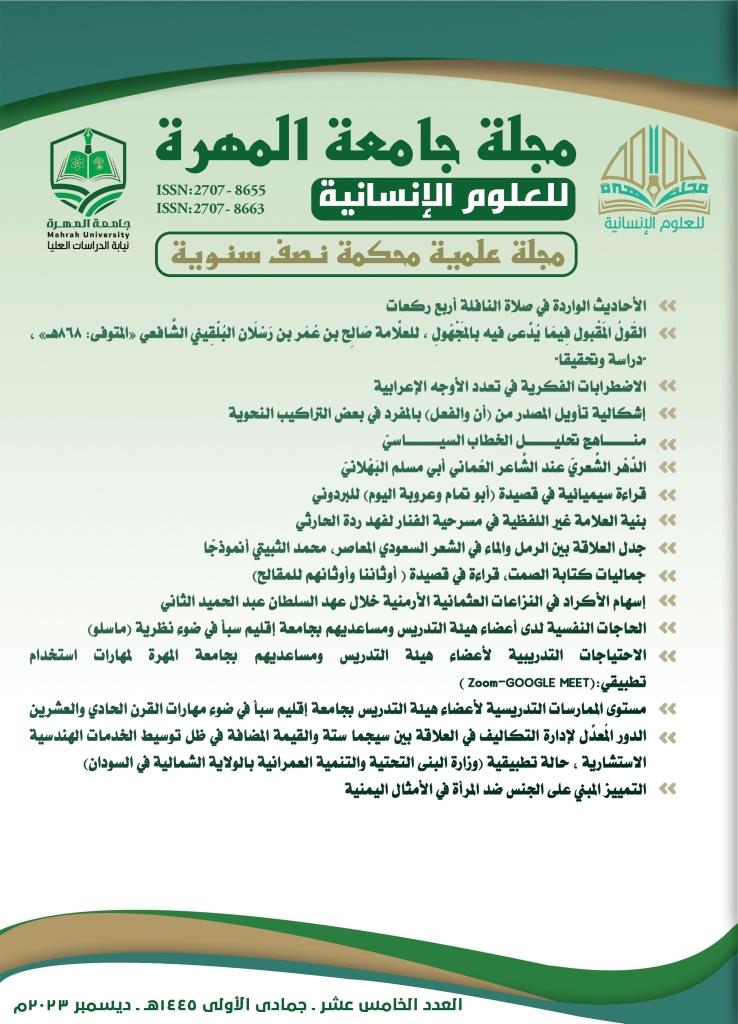بنية العلامة غير اللفظية في مسرحية الفنار لفهد ردة الحارثي
DOI:
https://doi.org/10.71311/.v4i2.118Keywords:
بنيَّة, العلامة, الجسديَّة, الأيقونة, المؤشرAbstract
فهد ردة الحارثي كاتب مسرحي سعودي، اهتم بالمسرح وأوقف عليه حياته، وسجل المشهد المسرحي المحلي والعربي له تفردًا وتميزًا في هذا المجال.
ومسرحية "الفنار" مناط البحث، الشخصية المركزية فيها "الفنار" ذلك الرمز البحري الذي تفقده جزيرة وسط محيط، وهذه الجزيرة، أنشأها خيال الكاتب، حاول سكانها البحث عن "الفنار"، لكن محاولتهم، باءت بالفشل، مع أنه معهم، ولا يتعرفون عليه، فتطرح المسرحية موضوعًا إنسانيًّا، فهي تتحدث عن الإنسان في أي زمان، وفي أي مكان، فلا يصل إلى الهدف إلا مَن يمتلك الرؤية.
وقد تبين من خلال البحث أن النص الدرامي مجال الدراسة، مليء بالرموز الدلالات، مما يجعله نصًّا يقبل أكثر من تأويل، وأكثر من قراءة.
Fahd Rada Al-Harthi is a Saudi playwright who gives interest to the theater and devotes his life to it. The local and Arab theater witnesses his uniqueness in this field.
The play "Al-Fanar”, is the central of the current research. The main character is the "lighthouse", where this marine symbol is missed on an island in the middle of an ocean. This island is created in the author’s imagination. The people of the island tried to search for the lighthouse. However, their attempts failed, although it was with them, but they did not recognize it. The play presents a human issue, as it talks about the human at any time and in any place, so only those, who have a vision, reach the goal.
The research finds this out, the current dramatic text is full of symbols and semantics, which makes it a text that accepts multiple interpretation and analysis.
Downloads

Downloads
Published
How to Cite
Issue
Section
License
Copyright and Licensing
copyright is retained by the authors. Articles are licensed under an open access Creative Commons CC BY 4.0 license, meaning that anyone may download and read the paper for free. In addition, the article may be reused and quoted provided that the original published version is cited. These conditions allow for maximum use and exposure of the work.

